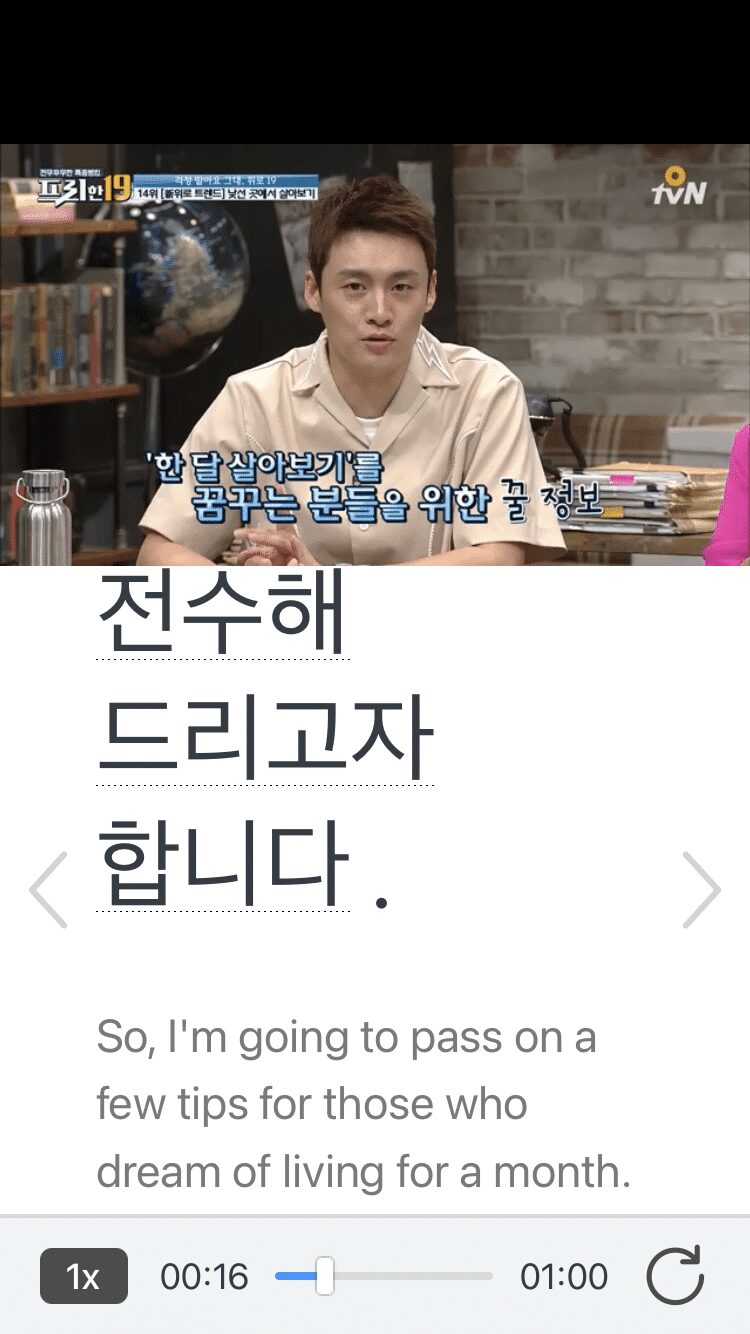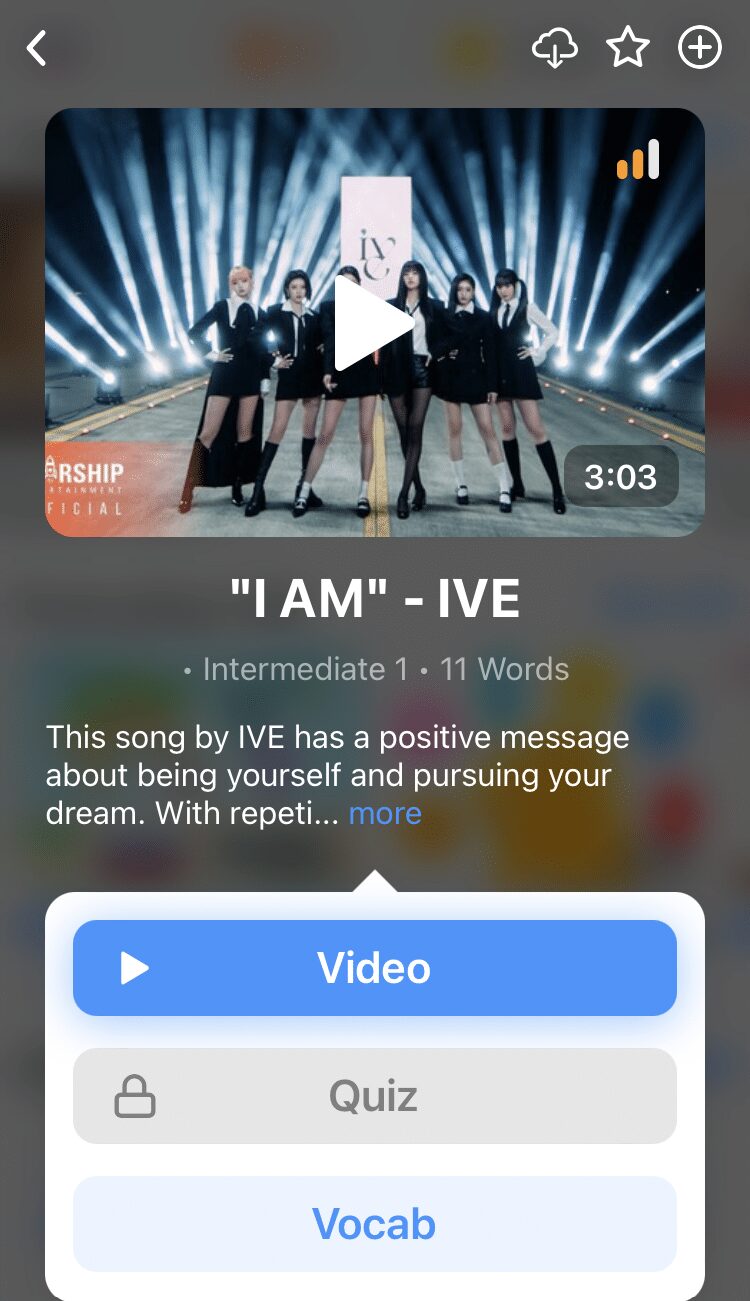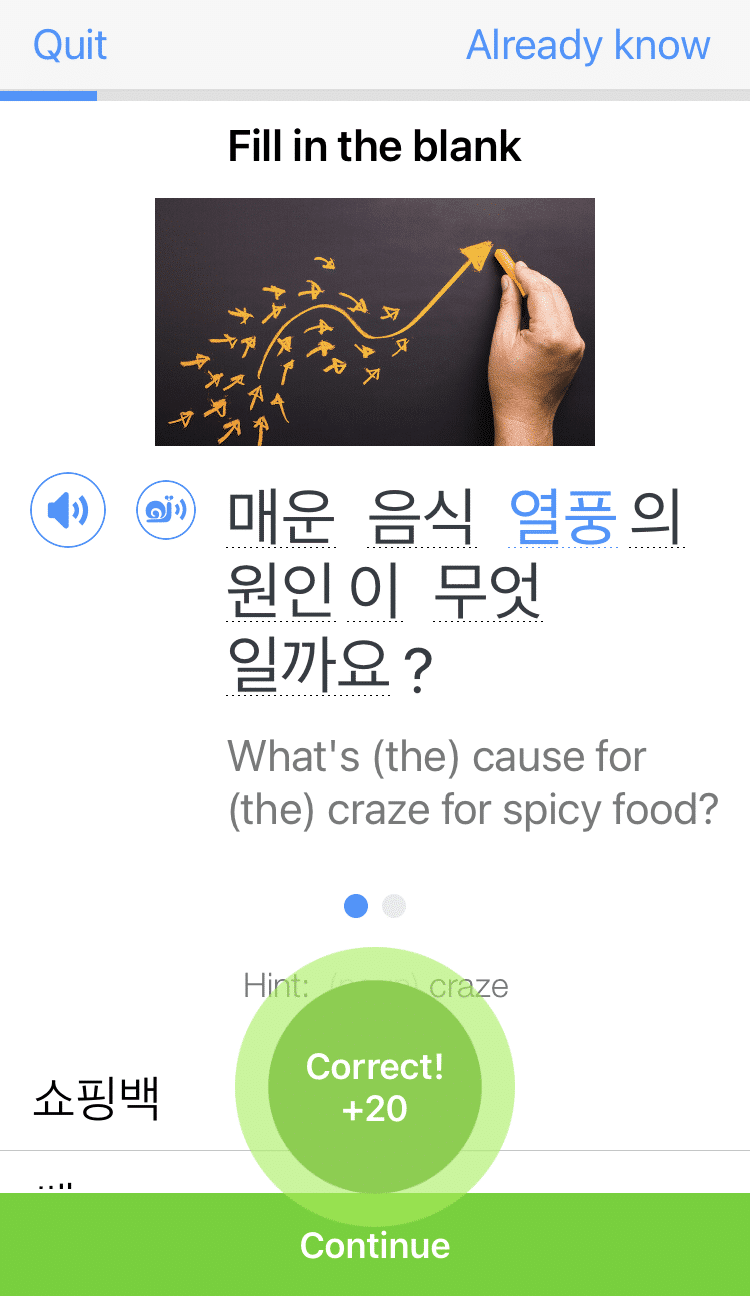Contents
- 1. ㅋㅋ (LOL)
- 2. ㅎㅎㅎ (Hahaha)
- 3. ㅍㅎㅎ (Puhaha)
- 4. ㅇㅋ (OK)
- 5. ㅇㅇ (Yes)
- 6. ㄴㄴ (No No)
- 7. ㅎㅇ (Hi)
- 8. ㅂㅂ / ㅃㅃ (Bye-bye)
- 9. ㄱㄱ (Go Go / Let’s Go)
- 10. ㅈㅈ (GG / Good Game)
- 11. ㅊㅋ (Congrats)
- 12. ㄱㅅ (Thanks)
- 13. ㅅㄱ (Good Work)
- 14. 헉 ! (OMG)
- 15. ㄷㄷ (Expressing Fear, Shock or Amazement)
- 16. 어케 (How?)
- 17. 잼게 / 잼께 (Have Fun)
- 18. 노잼 (No Fun)
- 19. ㅁㄹ (IDK)
- 20. OTL /ㅇㅈㄴ (Emoticon for Defeat or Disappointment)
- 21. ㅠㅠ/ㅜㅜ (Emoticon for Crying Eyes)
- 22. ㅇㅁㅇ (Emoticon for Shocked Face)
- 23. 0ㅠ0 (Emoticon for Vomiting)
- 24.ㅇㅈ? (Right?)
- 25. ㄱㅊㄱㅊ (It’s Okay, It’s Okay)
- 26. ㄱㅇㄷ (Lucky!)
- 27. ㅈㅅ (Sorry)
- 28. ㅇㅅㅇ (Emoticon for Sweet Face)
- 29.ㅇㄷ (Where Are You?)
- 30. ㄷㅊ (Shut Up)
- 31. ㅎㅈㅇㅇ (TL;DR)
- 32. ㄹㅇ (Real / Really)
- 33. ㅎㅅㄴ (Wink Emoticon)
- 34. ㄴㄱ? (Who?)
- 35. ㄱㄷ (Wait)
- 36.ㅇㄱㄹㅇ(Too True)
- 37. ㅇㅎ (A-ha!)
- 38. ㅉㅉ (Tsk-tsk)
- 39. ㅇㄴ (Just Woke Up)
- 40. ㄹㄷ (Are You Ready?)
- 41. ㅅㅇㅊㅋ (Happy Birthday)
- 42. ㅎㄹ (What The…?)
- 43. ㅁㅊ (Crazy)
- 44. ㅈㄴ (Vulgar Version of “Very”)
- 45. ㄷㅈㄹ (Want to Die?)
- 46. ㅅㅂ (Korean Swear Word)
- 47. ㄲㅈ (Go Away)
- 48. ㅗ (Emoticon for Middle Finger)
- 49. 8282 (Quickly, Quickly)
- 50. 091012 (Study Hard)
- How Korean Text Slang Shortens Words
- Special Features of Korean Texting
- Why You Should Learn Korean Text Slang
- And One More Thing...
50 Korean Text Slang Terms for the Modern Learner

Knowing Korean slang is a vital part of learning the language (or any other language, really).
You won’t find them in standard textbooks, but it’s important to understand them—as they will not only contribute to your overall fluency but also give you more insight into the Korean language and culture as a whole.
Today we’re going to look at a specific type of Korean slang: Korean text slang. Let’s go over the most common Korean text slang terms, as well as why you should learn them.
Download: This blog post is available as a convenient and portable PDF that you can take anywhere. Click here to get a copy. (Download)
1. ㅋㅋ (LOL)
This comes from 크크 . This is the Korean text slang equivalent of the English “LOL.”
The more ㅋ you include, the more laughs you’re having, so don’t be surprised to see whole strings of ㅋ. Whatever you said, it clearly hit your conversation partner’s funny bone.
2. ㅎㅎㅎ (Hahaha)
This comes from 하하하 . While ㅋㅋ tends to be more frequently used, ㅎㅎㅎ gets the same feeling across, but implies a softer kind of laugh. The rule for ㅋㅋ applies here too: the more ㅎ you include, the more laughs you’re having.
3. ㅍㅎㅎ (Puhaha)
Shorthand for 푸하하 , this is a bit stronger than ㅋㅋ and ㅎㅎㅎ. Imagine the first syllable as the person trying (in vain) to hold back their laughter, only for it to come out stronger than they probably intended (or wanted).
4. ㅇㅋ (OK)
Here’s an example of a Korean word derived from English. In standard Korean, “OK” would be 오케이 , which is further shortened to 오키 .
Essentially, ㅇㅋ just takes the first consonants, 오 and 키 . The meaning is the same as in English—a simple expression of acknowledgment.
5. ㅇㅇ (Yes)
Derived from 응 , this is a simple, informal way of saying “yes.” You probably already know that the proper way to say yes is 네 , but remember that Korean text slang implies that you’re communicating in a relaxed and casual context.
6. ㄴㄴ (No No)
A shortened form of 노노 , this is a transliteration of the English “no no.” It means what it sounds like—a negatory message.
7. ㅎㅇ (Hi)
Shorthand for 하이 , this is another transliteration of an English word with a similar sound and meaning. Thankfully, since it’s only two characters long, it’s enough to help you convey a quick greeting for friends and family.
8. ㅂㅂ / ㅃㅃ (Bye-bye)
These come from 바이바이 and the more cutesy 빠이빠이 , respectively. Both are a friendly way to end a chat. You can also write ㅂㅇ instead.
9. ㄱㄱ (Go Go / Let’s Go)
This comes from 고고 . It’s a message for someone to get out or do something, like hang out with the sender.
10. ㅈㅈ (GG / Good Game)
Be careful not to confuse ㄱㄱ with ㅈㅈ. The latter stands for “GG” or “good game,” which people say to each other once a game is finished.
11. ㅊㅋ (Congrats)
Based on 축하해요 , this is a common Korean phrase expressing congratulations, with 축하 being a shorter and less formal way of doing so.
12. ㄱㅅ (Thanks)
Shorthand for 감사 , this is a casual way to say thank you. 감사 is, in turn, a shorter form of the more formal 감사합니다 .
13. ㅅㄱ (Good Work)
This one comes from 수고하세요 , a common phrase complimenting someone on a job well done. Make sure you don’t accidentally flip the characters to write ㄱㅅ or you’ll confuse the other person!
14. 헉 ! (OMG)
Aside from 헉 (which comes out as a choked, surprised sound), you can also say 헐 , which has the same meaning. Use this when you want to say something like “No way!” or “Whoa!”
15. ㄷㄷ (Expressing Fear, Shock or Amazement)
This comes from 덜덜 , which means “shivering” or “quivering.” This is used in response to something that induces goosebumps. Similar to the laughter text slang, the more ㄷ you use, the more goosebumps you’re having.
16. 어케 (How?)
어케 is derived from the proper way to ask “how” or 어떻게 . But when spoken at a normal speed, it can sound a bit like 어떠케 , since the enunciation of 떻 ends rather sharply with the ㅎ consonant lingering at the bottom.
17. 잼게 / 잼께 (Have Fun)
This comes from 재미있게 , which means “having fun.” This slang has a slightly different method of abbreviation, as it combines 재 with the ㅁ of the succeeding syllable and then the entire concluding syllable of the phrase.
It’s worth noting that 재미있게 is pronounced like 재미이께 , which is why you can change 게 to 께 .
18. 노잼 (No Fun)
The Korean character 노 sounds like the English word “no,” and as you’ve seen from the last entry, 잼 means “fun.”
It’s exactly what it sounds like: if you say that someone is 노잼, you’re saying they’re a wet blanket.
19. ㅁㄹ (IDK)
This one is short for 몰라 , which means “I don’t know.” IDK is pretty common in English text slang, and the Korean version is just one character shorter.
20. OTL /ㅇㅈㄴ (Emoticon for Defeat or Disappointment)
Unlike the other text slang discussed so far, this is more of an emoticon than an informal abbreviation.
If you look closely, you can see the image of a person kneeling—with their head (O or ㅇ) down, their torso and arms to the ground (T or ㅈ) and their legs (L or ㄴ) bent in a 90-degree angle. This is used to express defeat, disappointment or exasperation.
21. ㅠㅠ/ㅜㅜ (Emoticon for Crying Eyes)
Another emoticon using the vowel ㅠ or ㅜ, this one resembles a pair of closed eyes with tears streaming down them.
22. ㅇㅁㅇ (Emoticon for Shocked Face)
Imagine the two circles as eyes and the square as a mouth hung open in surprise. Just with these three Korean characters, you can already convey extreme surprise about something.
23. 0ㅠ0 (Emoticon for Vomiting)
Now, replace the ㅁ in the last entry with the ㅠ vowel, and you can “draw” a face with puke coming out of its mouth. Use this when you’re sickened by what you just read—or if you actually feel like throwing up.
24.ㅇㅈ? (Right?)
This is shorthand for 인정? (lit. “I admit / “I acknowledge”). You normally use this phrase when you’re trying to check if the other person agrees with you—or you want them to agree with you.
25. ㄱㅊㄱㅊ (It’s Okay, It’s Okay)
Sometimes written as just ㄱㅊ (It’s okay) and based on 괜찮아 , this is a phrase you can use to reassure someone else (or yourself) that everything will turn out fine.
26. ㄱㅇㄷ (Lucky!)
This comes from 개이득 (lit. “dog gain”). While the translation of its longer version may seem funny or weird, it’s actually a phrase you use when something great happens to you entirely by chance.
27. ㅈㅅ (Sorry)
It’s never easy to apologize to others. If you’re not quite up to typing out 죄송하다는 (I’m sorry) to someone you wronged, this one will suffice
28. ㅇㅅㅇ (Emoticon for Sweet Face)
Also written as “ㅇㅂㅇ,” this is the Korean equivalent of the English (UwU), which can be positive or negative depending on who you’re talking to and how they feel about this particular emoticon.
29.ㅇㄷ (Where Are You?)
Shorthand for 어디 , this is a quick message you can send to someone when you’re on the way to a meeting place, but you’re not quite sure if that someone is already there or not. Younger Koreans sometimes useㅇㄷㄱ as well.
30. ㄷㅊ (Shut Up)
Derived from 닥쳐 , this is a blunt way to get someone who annoys you to stop talking. Of course, if you don’t want to cause offense, make sure you’re only using this one with someone close to you.
31. ㅎㅈㅇㅇ (TL;DR)
A quick version of 한줄요약 (lit. “one-line summary”), this is the Korean equivalent of the English “TL;DR” (Too Long; Didn’t Read). If someone sends you a wall of text that would take you at least several minutes to get through, you can fire “ㅎㅈㅇㅇ” back at them.
32. ㄹㅇ (Real / Really)
ㄹㅇ can be translated as “real” like the adjective ( 레알 ) or “really” like the adverb ( 리얼리 ). Either way, you use it to emphasize a point or the fact that something exists or is true.
33. ㅎㅅㄴ (Wink Emoticon)
Picture the ㅎ as an eye with a flat eyebrow, the ㅅ as an upturned mouth and the ㄴas a half-closed eye, and you can see how this becomes a way to tell someone “Hey, here’s a secret between you and me.”
34. ㄴㄱ? (Who?)
This is a shorter way to say 누구? It’s one of the more straightforward words on this list: if you want to clarify who the other person is talking about (or just want to be cool about getting to know that cute stranger you have your eye on), send this one STAT.
35. ㄱㄷ (Wait)
Shorthand for 기달 , ㄱㄷ also has a straightforward meaning. Next time someone sends you a barrage of incoherent texts, text this back right afterwards.
36.ㅇㄱㄹㅇ(Too True)
When you abbreviate 이거레알 (this is real), you get ㅇㄱㄹㅇ. If you want to express that you agree with someone, say this.
37. ㅇㅎ (A-ha!)
Yet another transliteration of an English expression, this one is based on 아하 . Like its English counterpart, you say this when you have a realization about something—or when you catch someone doing something they shouldn’t be doing.
38. ㅉㅉ (Tsk-tsk)
After catching the aforementioned someone for doing something they shouldn’t, you can type out this shorthand for 쯧쯧 .
39. ㅇㄴ (Just Woke Up)
This expression is short for 인남 , which in turn is an abbreviation of 일어나다 . The next time you get a text at an ungodly hour followed by a string of “Hey, what’s up? Where are you? Are you still alive?,” replying with this should be enough to reassure the other person.
40. ㄹㄷ (Are You Ready?)
ㄹㄷ is short for 레디 , the Korean transliteration of the English word “ready.” Once you’re done fixing yourself up after you text ㅇㄴ, expect the other person to reply with this one shortly afterwards.
41. ㅅㅇㅊㅋ (Happy Birthday)
This one speaks for itself. If you’re a bit too busy to say 생일축하해 to someone on their special day, you can text ㅅㅇㅊㅋ instead.
42. ㅎㄹ (What The…?)
Short for 헐 , ㅎㄹ is used to express surprise or shock.
43. ㅁㅊ (Crazy)
Now we’re getting to the text slang that shouldn’t be used in polite company at all. ㅁㅊ comes from 미친 , which you say when you find something (or someone) utterly unbelievable or insane.
44. ㅈㄴ (Vulgar Version of “Very”)
This is an abbreviation of 존나 , which is a very informal (and often vulgar) way to emphasize a point. It’s the Korean equivalent of saying “I’m f***ing happy” or “I’m f***ing cold.”
45. ㄷㅈㄹ (Want to Die?)
Again, you should never say this shorthand for 뒤질래 in polite company. You only say it to someone close to you who is teasing you—and even then, never with any real malice behind it.
46. ㅅㅂ (Korean Swear Word)
If you text this or its longer equivalent 시발 to your boss or grandparent, prepare to get chewed out, because this is a very vulgar word. For more Korean swear words you should probably never say, check out our full post on the topic.
47. ㄲㅈ (Go Away)
This is short for 꺼져 . Sometimes, you just want to be left alone (whether it’s because you want to sulk or the other person just annoys you that much) and this would be an appropriate response to such situations.
48. ㅗ (Emoticon for Middle Finger)
Wouldn’t it be nice to have an English equivalent of this emoticon, as opposed to the more explicit emoji version? Jokes aside, if you get one of these (or several in quick succession), you know the other person is absolutely stewing.
49. 8282 (Quickly, Quickly)
To understand this text slang, you have to understand Korean numbers. The Korean translation of “quickly, quickly” is 빨리빨리 , which sounds like 팔 (8) and 이 (2).
You say this to someone you’re close to when you want them to get something done ASAP.
50. 091012 (Study Hard)
This is another piece of text slang that requires some knowledge of Korean numbers. “Study hard” in Korean is 공부 열심히 , which is like a combination of 공 (0), 구 (9), 열 (10) and 십이 (12).
How Korean Text Slang Shortens Words
As you’ve seen above, Korean text slang often consists of shortened versions of full phrases.
“Shortened” here means using the first characters of each syllable in the phrase. This is where your knowledge of Hangul, the Korean alphabet, will come in handy because you’ll often only need singular vowels or consonants. At times, looking at Korean text slang is like looking at someone just typing out the alphabet.
In addition, as also shown above, plenty of Korean text slang terms are based on English words. They’re examples of Konglish, the use of English words in a Korean context. Often, these English loanwords or transliterations don’t keep their original meanings—and sometimes mean something else entirely.
Examples of Konglish include:
아이쇼핑 — lit. “eye shopping” but means “window shopping”
개그맨 — lit. “gag man” but means “male comedian”
화이팅 — lit. “Fighting!” but essentially means “Good luck!”
While perceptions of Konglish differ in Korea (criticisms have been leveled against the increasing use of English in Korean speak), Konglish has nonetheless become a mainstay in the Korean language and text slang in particular.
Special Features of Korean Texting
Purposeful Typos
You know how, in English texts, you use words like “wut” instead of “what” or “chu” for “you?”
Korean texts have a similar quirk. To save time and keystrokes, words are misspelled based on how they sound—i.e., the correct character is substituted with a similar-sounding one.
For example, 뭐해 , which means “What are you doing,” can be misspelled as 머해 , which means “What’s up?” This example cuts out the keystroke needed for the ㅜ character.
So the next time you get confused by a typo in Korean, try saying the phrase out loud. You’ll either understand what it really means then—or realize that the other person indeed made a typo.
Ways to Sound Cute
If you watch Korean TV shows or listen to K-pop, you may know the term 애교 , which roughly translates to appearing cute by acting in an affectionate, childlike manner.
애교 shows up in texts in a couple of ways.
- Adding the ㅇ character to the end of a word even when it doesn’t naturally exist there: For example, you can change the statement 배고파 , which means “I’m hungry,” to 배고팡 .
- Adding ~ to the end of sentences to make them seem friendlier: For example, adding ~ to 안녕 , which means “Hello,” turns it into 안녕~~~ , which when said aloud would sound like anyoungggg. The more ~ added, the longer the sound is extended.
Why You Should Learn Korean Text Slang
In South Korea, social media is serious business. Over 95 percent of the country is connected to the internet and many of them are on websites like KakaoTalk. So, you can imagine just how much text slang is used in a country so digitally connected.
Learning text slang is also just a good incentive for you to learn more Korean in general. As you’ve seen, understanding Korean text slang requires you to know the words and phrases they’re derived from.
Also, since the world of text slang is constantly being updated and expanded, you’ll always be kept on your toes as you engage with your Korean language studies.
After reading all of this text slang, you may be curious about regular spoken slang. Fortunately, you can find plenty of examples at FluentU, which has loads of authentic Korean videos made for and by native speakers.
FluentU takes authentic videos—like music videos, movie trailers, news and inspiring talks—and turns them into personalized language learning lessons.
You can try FluentU for free for 2 weeks. Check out the website or download the iOS app or Android app.
P.S. Click here to take advantage of our current sale! (Expires at the end of this month.)
Now that you know some slang you’ll no doubt be using in Korean text conversations, you’ll have much less trouble deciphering any jumble of seemingly random characters.
ㅂㅂ!
Download: This blog post is available as a convenient and portable PDF that you can take anywhere. Click here to get a copy. (Download)
And One More Thing...
If you enjoyed this post, you're already halfway to having the time of your life learning Korean with FluentU!
FluentU makes it possible to learn with K-pop videos, funny commercials, entertaining web series and more. Just a quick look will give you an idea of the variety of FluentU videos on offer:

FluentU really takes the grunt work out of learning languages, leaving you with nothing but engaging, effective and efficient learning. It's already hand-picked the best videos for you (which are organized by level and topic), so all you have to do is simply choose any video that strikes your fancy to get started.
Each word in the interactive captions comes with a definition, audio, image, example sentences and more.

Access a complete interactive transcript of every video under the Dialogue tab, and easily review words and phrases from the video under Vocab.

You can use FluentU’s unique Quiz Mode to learn the vocabulary and phrases from the video through fun questions.

FluentU keeps track of what you're learning, and tells you exactly when it's time for review, giving you a 100% personalized experience.
Review sessions use video context to help embed the words in your memory.
Start using the FluentU website on your computer or tablet or, better yet, download the FluentU app from the iTunes or Google Play store. Click here to take advantage of our current sale! (Expires at the end of this month.)






